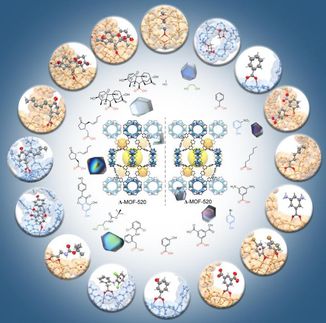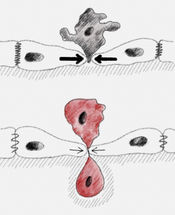TSRI chemists achieve new technique with profound implications for drug development
Method expands options for making pure batches of 'one-handed' molecules
Breaking carbon-hydrogen (C-H) bonds to alter existing molecules to create new ones is an increasingly important avenue for drug development. Of particular interest is mirror-image or "one-handed" compounds, but C-H breaking methods for making pure batches of these molecules have worked with only a limited range of starting materials.
Now a team from The Scripps Research Institute (TSRI) has established a new C-H activation technique that opens the door to creating a broader range of pure molecules of one-handedness or "chirality" by eliminating previous starting material limitations.
"This opens a new avenue to create chirally pure molecules for drug discovery," said Jin-Quan Yu, who is Frank and Bertha Hupp Professor of Chemistry at TSRI. "The potential may be huge."
In the new study the scientists worked with chiral amines, a class of chemical compounds that include some of the most potent and successful pharmaceuticals, including the antidepressant Zoloft and codeine. However, the same methods should also apply to other chemical classes.
The reactions involved all occur at room temperature with cheap, readily available constituents—all attractive features when looking ahead to the possibility of manufacturing new pharmaceuticals based on the technique.
Manipulating Mirror Images
The new research centers on the synthesis of chiral molecules, which are mirror images of each other called enantiomers that often possess different biological activities.
One example of this is thalidomide. Thalidomide, which was given to pregnant women as a sedative and anti-nausea drug in the 1950s in Europe, turned out to produce debilitating birth defects such as missing limbs. But, in fact, only one enantiomer of the molecule is responsible for these effects. Enantiomers are typically produced at similar rates, making mixtures that can be difficult to separate.
In recent years Yu's group has published vastly improved methods for breaking C-H bonds, also known as C-H activation. The resulting removal of a hydrogen atom creates an ideal reactive site for adding new functional pieces to a molecule. However, Yu was not satisfied with the ability of these methods to create chirally pure molecules.
In C-H activation reactions, much recent work to create chirally pure batches of molecules has relied on a process called "desymmetrization." However, a limitation of this process has been that the starting material needs to have two symmetric C-H bonds attached to two identical aryls or alkyls, called prochiral C-H bonds.
Breaking Good
The new method uses the metal palladium, combined with an amino acid, as a catalyst capable of breaking C-H bonds. The trick is the ability of the amino acid ligand bound to the palladium catalyst to select which mirror-image enantiomer of the starting material to react. Once the palladium breaks the C-H bonds of the desired chiral molecules to create a new open spot, iodine will bond to replace the removed hydrogen.
"That iodine is the magic, it can be replaced with anything as medicinal chemists wish," says Yu, "That's the beauty."
In developing the method, Yu and his team took lessons from past work and tested a variety of catalysts until they identified a benzoyl-protected L-leucine as a ligand that guides the palladium catalyst to react preferentially with only one of the two mirror-image enantiomers in the starting amine mixture. This produces a mixture where almost all of one enantiomer is iodinated, while the other remains unchanged, and iodinated molecules are easily separated from others. This type of preferential production of one enantiomer over another is known as kinetic resolution.
The team has already created a variety of chiral amines using the new technique to demonstrate its potential, and the researchers are planning to apply variations on their technique to other classes of compounds.























































